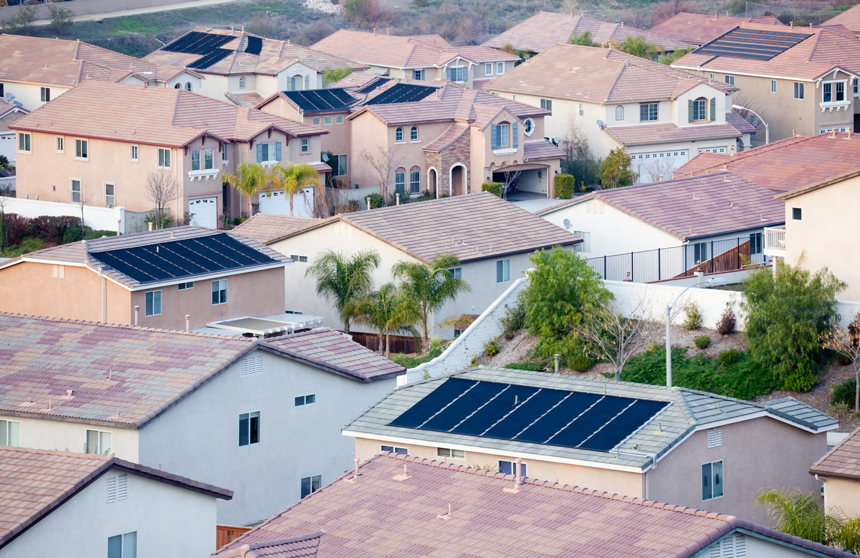Good news for Californians with solar panels — your solar system will increase your resale value.
Nationally, homes with solar systems installed sell for about 4% more than a comparable home without solar. Specifically, in California, the solar premium averages:
- 2.7% in Riverside, equal to an additional $9,900;
- 3.6% in Los Angeles, equal to an additional $23,300; and
- 4.4% in San Francisco, equal to an additional $41,700, according to Zillow.
91% of California homebuyers say energy-efficient features are important to them when deciding what home to purchase, according to Go Solar California, a joint effort of the California Energy Commission and the California Public Utilities Commission.
Solar is about to become a lot more common across the state, as most new residential construction will be required to include solar panels beginning in 2020. This is already the case in San Francisco, where new residences have been required to include solar since 2017.
But what about current homes — is it worth it for homeowners who don’t already have a solar system in place to consider solar?
Related article:
Solar on every roof? New construction standards in California.
The many ways to go solar, and their problems
While a higher resale value is a bonus, the main benefit of going solar is a reduction in utility bills. But that monthly savings comes at a steep price.
The average upfront cost to install a solar system in an average-sized California home is about $35,000, according to Go Solar California. Depending on the size and strength of the system, as monthly savings gradually add up, the homeowner won’t see a return on investment for 10-20 years after installation. That length of time takes a serious commitment on behalf of the homeowner. Some government rebates exist to offset the initial cost, but these rebates are becoming harder to find as the dollars available dwindle.
As an alternative to owning a solar system, many homeowners and builders are opting to use a solar leasing company to ensure no upfront costs. Solar leases are their own beast, as they can cause delays when the homeowner chooses to sell their home. The lease may be assumed, but the buyer needs to qualify.
The Property Assessed Clean Energy (PACE) program is yet another way homeowners are installing solar panels when they don’t have enough cash to purchase the system outright. PACE, a state-sponsored program, finances energy-efficient upgrades and improvements, including the installation of solar panels. Payments are then attached to the homeowner’s tax bill.
But PACE has become nearly irrelevant due to the serious problems it has created for the California residents who have used it. In many cases, the lower utility payments aren’t enough to offset the owner’s higher tax bill under PACE. Unable to make the high payments, many homeowners have defaulted, facing tax lien foreclosures.
No matter how you look at it, going solar is not an easy task. Homeowners who want to install a solar system either need a lot of cash on hand or need to be willing to take on the risks of a solar lease or a PACE program.
Perhaps the best way to go solar? As those homebuyers who paid the average 4% premium to purchase a home with solar already installed will tell you, purchasing a home with solar already in place may be the easiest way to go.














